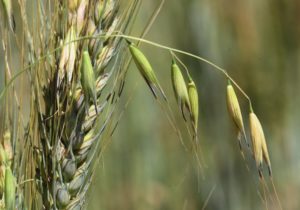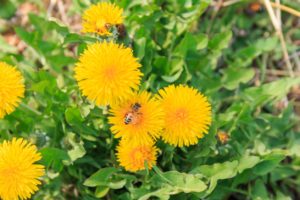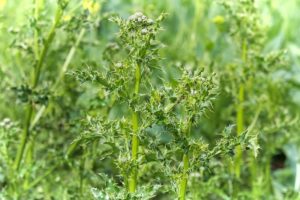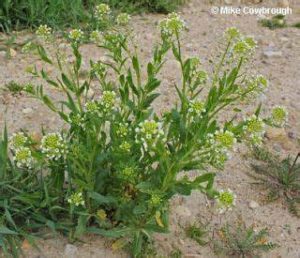Dry Bean Weed Control
Summary
One of the biggest challenges for growing dry beans is weed control. Unlike cereal and oilseed crops, pulse crops are generally not competitive with weeds and are highly susceptible to yield loss (20% to 40%) as a result of weed competition. Dry bean can experience severe yield loss with even low weed pressure. Good weed control for dry bean is also important, as not only can weeds impact yields, but green weedy material can harbour diseases and cause quality issues by staining beans during harvest.
Challenges include:
- the development of herbicide resistance in weed populations
- limited options for herbicides on the market
- chemistries not registered solely for pulses due to its small global market.
For all of these reasons, it is important to take an integrated approach to weed control which combines cultural measures, preventative measures, and effective use of herbicides.
Common winter annual weeds include flixweed, downy brome, shepherd’s-purse, stinkweed, narrow-leaved hawk’s-beard, blue burr, dog mustard, ball mustard, common groundsel, yellow whitlow grass and common pepper grass.
Perennial weeds include: quack grass, Canada thistle, perennial sow thistle, toadflax and dandelion.
Preventative Measures
|
|
Knowing your field’s weed history
|
|
Choose clean fields, free of herbicide residues |
|
Maintain Accurate records of herbicide use |
|
Cultural Measures
|
|
CROP ROTATION |
|
SANITATION |
|
SEEDS/SEEDING RATES |
|
TILLAGE |
|
rod-weeding |
|
harrowing |
|
post-emergence harrowing |
|
Effective Use of Herbicides To determine which herbicide is best suited for your needs, refer to Alberta Blue Book (Crop Protection Manual). This manual provides a comprehensive and up-to-date guide for the selection and application of chemicals to protect your crop. Because dry bean does not provide a competitive canopy early in the season, weed growth will be greater and more visible in an emerged dry bean crop. The decision to spray or not to spray should be based on economics. If the potential yield loss is greater than the cost of the chemical and application, then you should spray. Prior to spraying, producers should evaluate the sensitivity of the surrounding environment and avoid spray drift. |
|
SPRAYER |
|
CROP SCOUTING |
|
KNOW YOUR WEEDS |
|
ALLOW FOR CROP STRESS |
|
NODE STAGING |
|
HERBICIDE TANK MIXES |
|
SEPARATE APPLICATIONS OF HERBICIDES ON THE SAME FIELD |
|
RISKS OF SPLIT APPLICATIONS
|
|
MANAGING HERBICIDE RESISTANT WEEDS
|
|
Timing of Herbicide Application Timing of herbicide application is very important. Earlier herbicide application means weeds are well-exposed, are smaller (generally weeds are easier to control at a younger stage), and the crop is less susceptible to injury. |
|
WEED CONTROL THE YEAR BEFORE
|
|
SPRING PRE-SEED/PRE-EMERGENT WEED CONTROL |
|
SAME YEAR – IN CROPPOST-EMERGENT WEED CONTROL
|
|
PRE-HARVEST WEED CONTROL
|
|
POST-HARVEST WEED CONTROL |
|
RESOURCES
- Application of Herbicides Under_Stressful Conditions
- Post Emergent Weed Control in Dry Beans 2019
- Pre-Seed and Pre-Emergent Weed Control in Dry Beans – 2019
- Post Harvest Weed Control Prior to Pulses 2019
- Wild Mustard in Pulse Crops
- Wild Oat Resistance
LINKS
- Alberta Blue Book
- Canada Thistle
- Critical Weed Free Period of Pulses – Pulse Advisor Agronomy Newsletter
Special thanks to Saskatchewan Pulse Growers.


